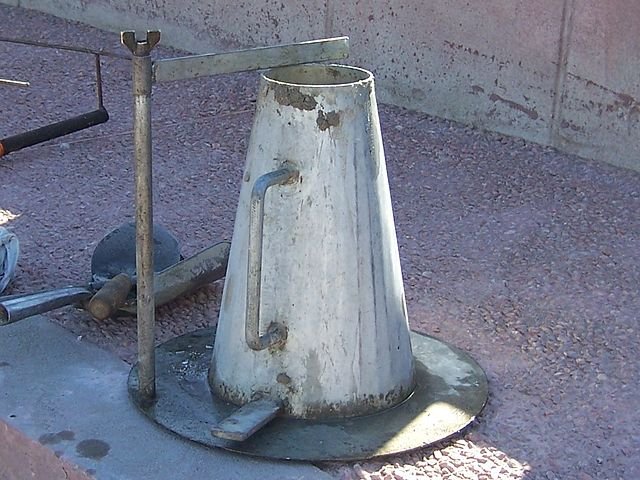Slump Flow test and significance: –
This test is used for under water construction work. This test is also developed in japan. This test is used to asses horizontal flow of concrete. There is no any obstruction while performing this test. This is rapid test and easy to perform. This test is useful understand how concrete behave in the obstructions like reinforcement water and etc.
Apparatus: –
A slump cone (Method of test for slump of concrete) shall be use

The plate shall be made of steel and sufficiently watertight and rigid.
Scale to measure slump flow
Procedure: –
- Wipe the internal and external surfaces of the slump cone and plate with wet cloth Place the slump cone on the plate, which is laid horizontally.
- Fill the sample in the cone.
- Level each layer with a tamping rod and then rod five strokes uniformly over the area.
- Prepare the sample in the receiving container and pour into the cone by evenly distributing the concrete over the area.
- The time from the beginning to the end of filling concrete in the slump cone shall be within 2 minutes.
- Level the top surface of concrete with the top rim of the slump cone, and immediately raise the cone vertically by a steady upward lift without interruption.
- When the movement of the concrete has stopped, measure the apparently maximum diameter and the diameter at right angles to it,
and take the average of both diameters as the slump flow. - The measurement shall be performed once.
- When measuring the time to 500mm flow, measure the time from the beginning of the raising of the slump cone to the moment when the apparently maximum diameter reaches 500 mm with a stopwatch to the nearest 0.1sec.
- When measuring the time to the end of the flow, measure the time from the beginning of the raising of the slump cone to the moment when the flow visually stops with a stopwatch to the nearest 0.1sec.

Result: –
For the slump flow (mm), the two diameters at right angles to each other shall be measured to the nearest 1mm. The average shall be expressed to the nearest 5mm.